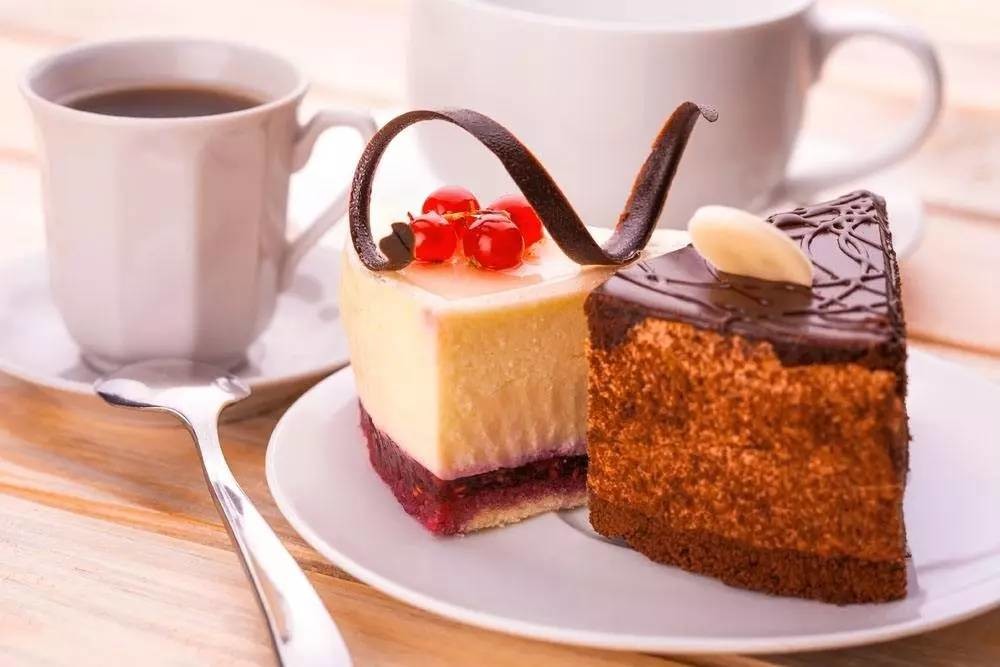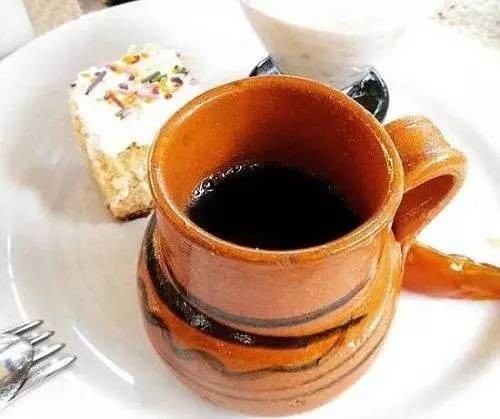Random talk | the collocation of coffee and gourmet food (1)
For professional baristas, please follow the coffee workshop (Wechat official account cafe_style)
(the following is from my speech at the 2002 annual forum of the American Fine Coffee Association)
It's not difficult to match coffee with good food, because most of the work is done at the dinner table. However, in order to deeply understand the collocation and integration between taste and aroma, it is very difficult and complicated to find the best collocation scheme through descriptive analysis. We often find that the perfect match is usually two ingredients that have nothing to do with taste, such as sweet and sour food and mocha coffee. Therefore, to master the collocation of coffee and food, we need to constantly practice, to explore, to explore unlimited possibilities.
Theoretical basis
We have millions of olfactory cells, but only a few thousand taste cells, so we smell more aromas than we taste, but what we call "taste" is actually the sensory sensation produced by the cross-fusion of smell and taste.
Children have a sweet tooth, and taste cells are more sensitive. As people get older, people begin to prefer the smell of flowers, while adults prefer the smell of fruit. In addition, children do not like the taste of fat, which explains why young people prefer sweeter, less roasted coffee, while adults prefer espresso, which is more deeply roasted.
Collocation method
The collocation of coffee and gourmet food pursues the balance between tastes. There are no more than two principles, one is similar taste, the other is taste contrast, and at the same time, we should try to avoid taste conflict or pollution. When the taste of one food is too strong, masking or changing the taste of another food, the taste of the two will conflict.
Taste balance: perfect integration between flavors to achieve harmony and unity.
Taste similar: use food with similar taste.
Taste contrast: use two foods with very different tastes to form a contrast.
Taste conflict or contamination: the overall taste is out of balance because the taste of one or more of the foods is masked or changed.
Factors to consider when describing the taste of coffee and food
Coffee:
-acidity and taste
-overall aroma and taste
-degree of baking
-Yuxiang
-concentration
-brewing method
-Raw materials / additives
Food:
-Food and taste
-temperature
-grease
-spices
-overall aroma and taste
-concentration
-texture
The correct way to describe the taste and match the food
According to the environment, climate, altitude, classification, baking method and roasting degree of coffee, each kind of coffee has its own characteristics. The following is a summary of the most prominent taste characteristics of coffee from various producing areas. Please note that the following is only a summary of my personal experience, not an official statement, but for reference only:
Brazilian coffee: sweet and mild, with flavors of cashews, almonds and peanuts; ideal with biscuits and doughnuts, as well as cheese hotpot and chicken.
Colombian coffee: milk chocolate, walnut, caramel, blackcurrant, cashew, sweet, vanilla; ideal with cinnamon rolls, nut bread, chocolate, beef and game.
Costa Rican coffee: milk chocolate, citrus, butter whisky flavor, with peach and nectarine flavor; suitable with fruit tower, cream pie, cheesecake, game, seafood, shellfish.
Italian espresso: caramel, bitter sweet, dark chocolate, BlackBerry, honey, rich flavor; suitable with lemon fruit dessert, dark chocolate, fruit parfait, Tira Misu.
Ethiopian coffee: lemon, honey, peach, apricot, Parmesan cheese, blueberry, Darjeeling black tea, jasmine, ginger; suitable for summer fruits, Mediterranean cuisine, chicken and eggs.
French baking (deep baking): caramel, dark chocolate, honey; suitable for chocolate hot pot, cream bread, Bennett cake, grilled meat or fish, bacon or smoked cheese, southern French cuisine.
Guatemala coffee: cocoa, pepper, cinnamon, vanilla, dark chocolate, cherry, hazelnut, dry white wine; suitable with dark chocolate, toffee fudge, fruit and fruit platter, barbecue.
Indian monsoon coffee: peanut, caramel, yeast, slightly salty; suitable for Daipei sweet rolls, nut pies, shellfish, curry fish, bacon.
Java Coffee: sweet, with syrup, port, jasmine and cream aromas; suitable with Tira Misu, Italian cuisine, red wine stewed pears, red fruits, beef and game.
Kenyan coffee: black cherry, Cabernet, Beaujolais grape, cinnamon, lemon, plum, currant; suitable with chocolate jam cake, Cream Caramel, dark fruit, stew.
Hawaiian Kona Coffee: grapefruit, floral, blueberry, milk chocolate, sweet with raisins and dates; suitable with fruit muffin, butter cake, sweet rolls, fish, seafood, chicken.
Kopi Luwak: earthy, dark chocolate, caramel; suitable with dark chocolate, bacon or smoked cheese, ketchup, game, soy sauce.
Latte / cappuccino: sweet, nutty, chocolate, mellow taste; suitable for biscuits, doughnuts, sweets, when with delicious food should pay special attention to avoid taste pollution.
Mexican coffee: chestnut, milk chocolate, cinnamon, cashew; suitable with cream pie, butter cake, milk chocolate, cheese, chicken, seafood.
Mocha Java Coffee: blueberry, BlackBerry, star anise, clove, ginger, cinnamon, black cherry, rose petals; suitable with mellow ripe fruit, spicy cake, Asian cuisine, spicy food, chocolate hot pot, cooked / raw cheese.
Papua New Guinea Coffee: vanilla, fruit, rose petal, peanut, almond, Hawaiian fruit, cardamom; suitable with red fruit, nut pie, Asian cuisine, game.
Puerto Rican coffee: malt, chocolate, delicate taste, with floral aromas; ideal with doughnuts, cheesecake, chicken and eggs.
Sulawesi coffee: silky, buttery, earthy, slightly irritating, mushroom, caramel, sweet pepper, lavender; suitable for caramel dessert, lemon pie, fruit or cheese platter, bacon.
Indonesian Sumatran coffee: earthy, butter, clove, sweet pepper, dark chocolate, malt, wood, honey; suitable with spice cake, chocolate hot pot, bacon, cooked cheese.
Viennese baking: milk chocolate, raspberry, cherry, blueberry, sweet pepper, cardamom; ideal with doughnuts, red fruit, Italian cuisine, cream pie, barbecue, chicken.
Zimbabwe coffee: hazelnut, sesame, milk chocolate, red grape, raspberry; suitable with mellow ripe fruit, nut pie, stew, cheese, fish, chicken.
Author
Spencer Turer
Original English address
Www.linkedin.com/pulse/pairing-coffee-food-spencer-turer
Important Notice :
前街咖啡 FrontStreet Coffee has moved to new addredd:
FrontStreet Coffee Address: 315,Donghua East Road,GuangZhou
Tel:020 38364473
- Prev

At these moments, you need a cup of coffee.
Professional baristas Please follow the Coffee Workshop (official Wechat account cafe_style) someone told the coffee maker that drinking coffee is an addictive thing, because you will enjoy the feeling it makes you more and more, which can not be replaced by other drinks. So is there a moment when you think you need a cup of coffee the most? Today, Mr. Coffee will make a list of the people who want to drink coffee most.
- Next

Coffee Photography course | SAY HELLO to the world with "Flowers and Coffee"
Professional baristas Exchange Please follow the Coffee Workshop (official Wechat account cafe_style) Nietzsche once said: every day without dancing is a disappointment to life. There are many bloggers abroad like to use flowers and coffee to start a good morning life, they will put flowers and coffee to take good pictures to record and start a new day. Such pleasure can be easily achieved.
Related
- Beginners will see the "Coffee pull flower" guide!
- What is the difference between ice blog purified milk and ordinary milk coffee?
- Why is the Philippines the largest producer of crops in Liberia?
- For coffee extraction, should the fine powder be retained?
- How does extracted espresso fill pressed powder? How much strength does it take to press the powder?
- How to make jasmine cold extract coffee? Is the jasmine + latte good?
- Will this little toy really make the coffee taste better? How does Lily Drip affect coffee extraction?
- Will the action of slapping the filter cup also affect coffee extraction?
- What's the difference between powder-to-water ratio and powder-to-liquid ratio?
- What is the Ethiopian local species? What does it have to do with Heirloom native species?







